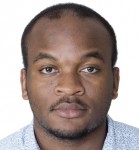Participants: LTU Division of Space technology and SSC.
Software-Defined Radio (SDR) is a technology where components that have traditionally been implemented in hardware are instead placed in a computer’s software. SDR has been used in the mobile telephony industry for quite some time, and with the increasing capacity in personal computers and new hardware for SDR, the technology now has a broader field of application.
The subproject is intended to develop a system for ground stations that would enable satellite communication based on flexible SDR technology, and to investigate new possibilities within communication with satellites enabled by this technology.
Abstract
Satellite telemetry, tracking, and command (TT&C) is a crucial activity needed to maintainthe health of a spacecraft or sometimes to facilitate payload data download. TT&Cground operations are facilitated by a communication device known in the TT&C communityas a baseband. State-of-the-art baseband systems currently in the market haveseveral financial and technical limitations. Financial drawbacks include high capital expenditure,operational expenditure, maintenance costs, and high upgrade costs, whiletechnical limitations include both upgradability and scalability.This thesis presents the feasibility study of a software-defined baseband (SDB) as aviable alternative to existing basebands. The SDB considered here is implemented on aradio architecture that consists of a general-purpose processor for performing radio functionsand low-cost commercial-off-the-shelf, software-defined radio frontends for signalsampling. The research questions focus on the feasibility and design aspects of this SDB.This thesis approaches the design of the SDB with a software development cyclethat involves functional analysis (design), verification, and validation of the radio functionsconstituting the SDB system. The radio functions are the telemetry receiver andthe telecommand transmitter. Functional analysis is performed through functional flowblock diagrams. The verification process is performed through simulations that take intoaccount realistic channel impairments for missions operating in the S-band and characterizedby the Consultative Committee for Space Data Systems (CCSDS) as category Amissions (less than 2 million km). Validation is performed on a laboratory testbed andseveral orbiting satellites.Through the above software development cycle, the telemetry receiver and telecommandtransmitter are developed using the open-source GNU radio development kit. Modulationschemes, line codes, and filters along with CCSDS forward error correction codescommonly employed in TT&C communications are successfully designed, verified in simulations,and validated in a hardware testbed. The performance results from the validationtests demonstrate that it is feasible to implement the SDB TT&C radio functions on theadopted radio architecture.Finally, this thesis investigates in detail the novel concept of multiple spacecraft peraperture (MSPA) that enables communication with several spacecraft from a single antenna.It focuses on in-band interference and out-of-band emissions arising from radiatingmultiple telecommand links from a low-cost SDR frontend. An MSPA transceiver is successfullydeveloped and integrated into the SDB system. Validation tests show that itis feasible for the integrated MSPA transceiver to radiate two telecommand links whileconforming to spectral regulations.
Contact

Space Technology
[email protected]
Kiruna